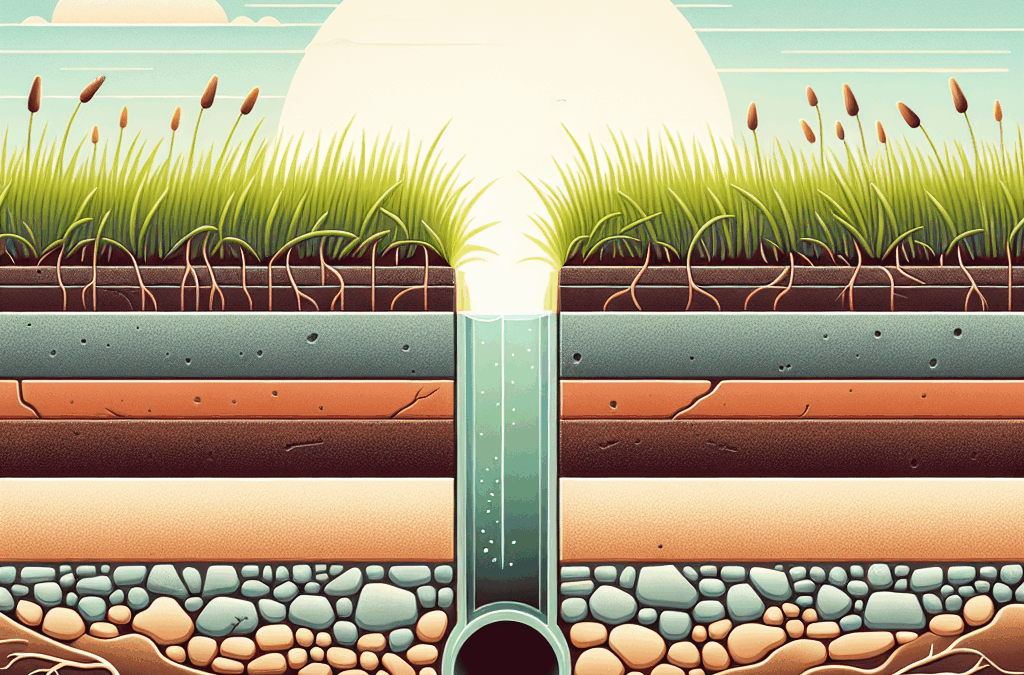French Drains: How to Optimize for Different Soil Types
When it comes to keeping your yard dry and your home foundation safe, French drains are often the unsung heroes. 🌧️ But did you know that the effectiveness of a French drain can vary significantly depending on the type of soil you have? In this blog post, we’ll dig into the best practices for optimizing French drains for different soil types, ensuring that you make the most out of this drainage solution.
Table of Contents
1. Understanding French Drains
2. Soil Types and Their Impact
3. Optimizing French Drains for Clay Soil
4. Optimizing French Drains for Sandy Soil
5. Optimizing French Drains for Loam Soil
6. Conclusion
7. FAQs
Understanding French Drains
Before we get into the nitty-gritty of soil types, let’s first understand what a French drain is. Essentially, it’s a trench filled with gravel or rock containing a perforated pipe that redirects surface water and groundwater away from an area. These drains are particularly useful in preventing water from damaging foundations, flooding your yard, or seeping into your basement.
Soil Types and Their Impact
Soil is not just dirt; it’s a complex medium that can make or break your drainage system. The three main types of soil are clay, sandy, and loam, each with its unique properties.
Optimizing French Drains for Clay Soil
Clay soil is dense and has poor drainage capabilities. This means water tends to accumulate, potentially causing flooding. To optimize a French drain in clay soil:
🔹 Use a larger diameter pipe to handle increased water flow.
🔹 Consider installing a geotextile fabric to prevent soil from clogging the drain.
🔹 Ensure the trench is deep enough to bypass the impermeable clay layer.
Optimizing French Drains for Sandy Soil
Sandy soil drains water quickly, which is generally good, but it might lead to erosion if not managed properly. Here’s how to optimize:
🔹 Use finer gravel to prevent sand from entering the pipe.
🔹 Ensure the trench has sufficient slope to direct water efficiently.
🔹 Regularly inspect and maintain the drain to prevent pipe exposure due to erosion.
Optimizing French Drains for Loam Soil
Loam soil is the goldilocks of soils—neither too dense nor too sandy. Yet, optimizing is still key:
🔹 A standard French drain setup usually works well.
🔹 Use a balanced mix of gravel and sand around the pipe.
🔹 Regular inspection is still crucial to catch any unforeseen issues early.
Conclusion
Installing a French drain is a wise decision for managing water in your yard, but its effectiveness is highly dependent on the soil type. By understanding these nuances, you can tailor your approach to ensure your drain works efficiently and lasts longer. Whether you’re dealing with the stubbornness of clay or the free-flowing nature of sandy soil, knowing your soil is half the battle won. 🏆
FAQs
Q: What is the main purpose of a French drain?
A: The primary purpose is to redirect water away from specific areas, such as home foundations, to prevent damage.
Q: Can I install a French drain myself?
A: Yes, with the right tools and understanding of your soil type, you can install a French drain yourself. However, consulting a professional might be beneficial for complex installations.
Q: How often should I maintain my French drain?
A: Regular inspection, especially after heavy rains, is recommended. Clear any blockages and ensure that the trench and pipes are in good condition.
Q: Do I need a permit to install a French drain?
A: This depends on your local regulations. It’s always a good idea to check with your local zoning office before starting your project.






































Recent Comments